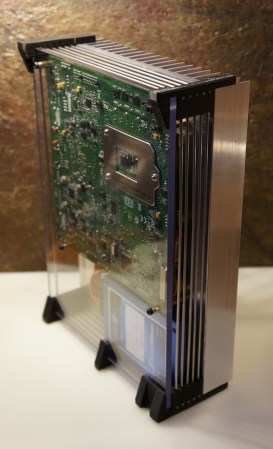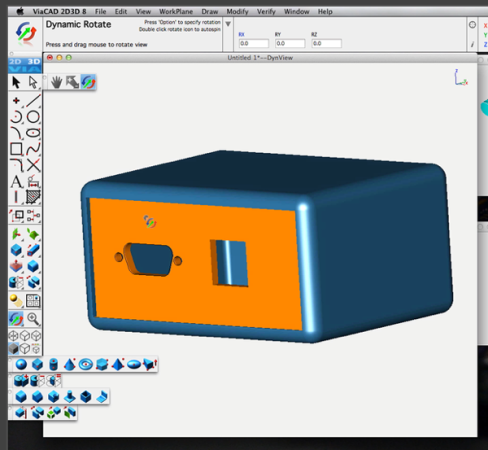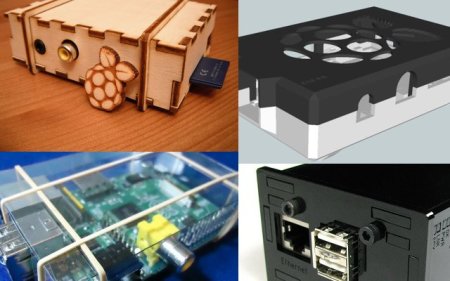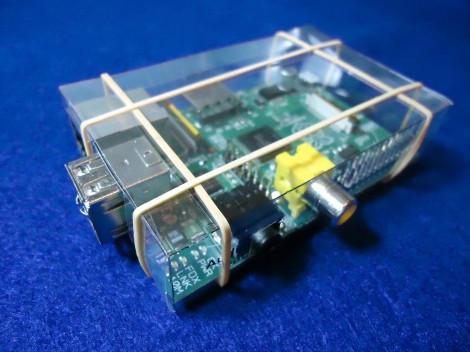
This sexy beast is [DeFex’s] new silent home theater PC. To give you an idea of scale, that motherboard is a Mini ITX form factor. Mounted below it is the solid state drive which is an SLC version chosen because they tend to last longer than the MLC variety. This distinction comes with a price tag that is $100 more expensive.
But we digress. It’s the custom case that really caught our eye with this build. The frame is made of a huge aluminum heat sink. It measures about 7″ by 10″ and sets the final foot print for the computer. An aluminum puck was added to transmit heat from the processor to the heat sink. Holes were drilled and tapped into the heat sink to accept the brass stand offs which hold the motherboard in place.
The near side of the case is a sheet of acrylic. It connects to the rest of the case using 3D printed brackets at each corner. There is an additional bracket on the bottom to hold the hard drive in place. The sides of the case are filled in with bicycle spokes which also find a home in the corner brackets. Now the hard part will be figuring out which orientation looks the best for displaying his fine craftsmanship.
[via Reddit]

















